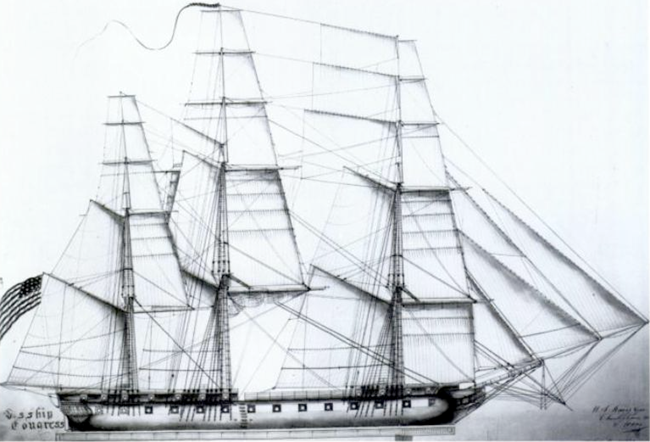Last updated: September 18, 2018
Article
A Perfect Home for Pirates & Privateers

National Archives RG 45 Ware Drawings; see Canney, Donald L. (2001)
The Virgin Islands’ geographical features and strategic location were key factors in the struggles for control of the islands. The Virgin Islands consist of approximately 90 islands, islets, and cays, all of which are within no more than a day’s sail from each other and some of which are within sight of Puerto Rico. For the most part the islands were left uninhabited by the Spanish in the 16th century. Being uninhabited and in close proximity to Spain’s wealthy Puerto Rican port, these islands with excellent anchorages, surrounded by high hills, were perfect rendezvous and hideaway places for pirates and privateers from foreign powers.
Throughout the latter half of the fifteen hundreds and well into the 17th century, the Virgin Islands were used for staging assaults aimed at plundering Spanish shipping or capturing San Juan, Puerto Rico. Spain maintained control of Puerto Rico despite relentless attacks by pirates/privateers that included French corsairs, Dutch freebooters, and Queen Elizabeth’s English Sea Dogs (many of whom were successful pirates subsequently appointed as statesmen).
When Denmark first attempted to colonize in the Virgin Islands in 1665, the Danish cleric of this settlement expedition recorded that they were soon attacked by English “pirates” who took all their food and ammunition. Few survivors made it back to Denmark (A transcription by Jens Villumsen of Danish records 2016). The English, possibly the same “pirates,” soon returned in 1666 and stayed seven years, leaving just weeks before the Danes returned in 1672. The new colony declared neutrality and quickly the Danish islands soon gained a reputation for illicit commerce as neutrality had opened trade to all, good or bad. The colony mirrored the cosmopolitan population of places like Tortuga and Port Royal, and many of the most infamous pirates of this era dropped anchor in Danish waters.
USS Congress was the flag ship of the US Navy Squadron which was formed in 1822 to suppress piracy and the slave trade. The West Indies Squadron or West Indies Station was located on St. Thomas.
